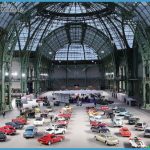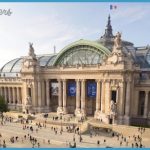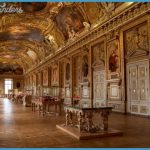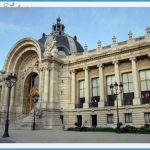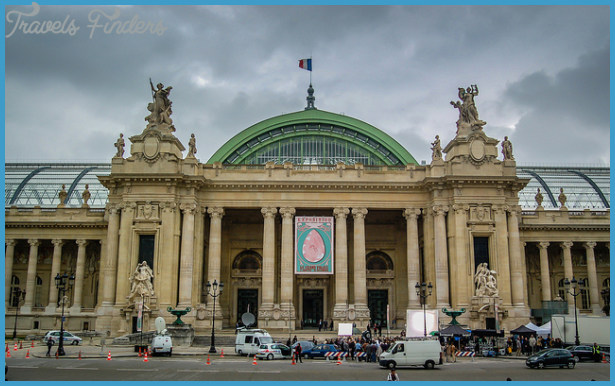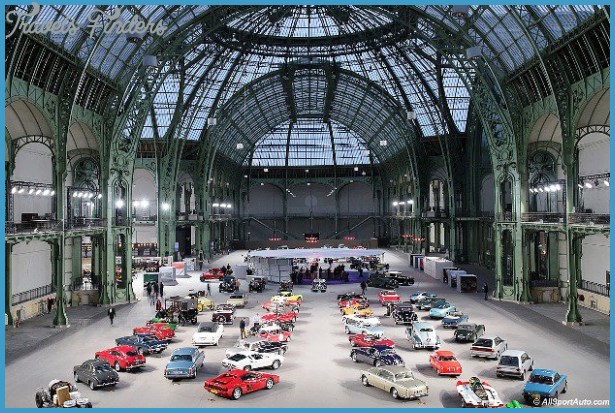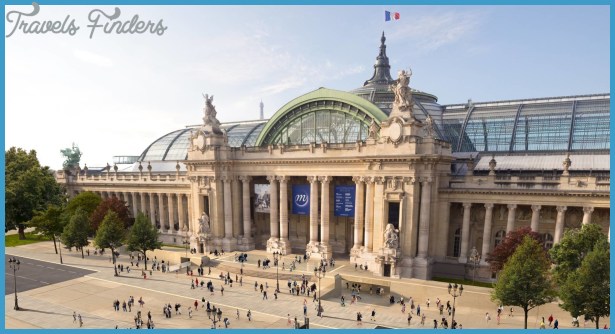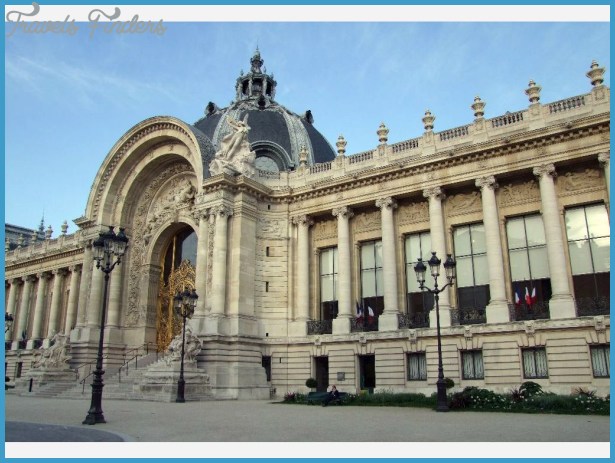CHARLES GIRAULT
With a floor area of some 775,000 sq ft (72,000 sq m) and perimeter walls around 0.6 miles (1km) in length, the Grand Palais is the largest surviving 19th-century exhibition building from the era of world fairs. It was built in just three years for the Universal Exhibition of 1900 and combines a main structure of iron and glass with monumental stone facades in the grand, neoclassical Beaux Arts style that was promoted by the academic Ecole des Beaux-Arts in Paris. Another style, Art Nouveau, is also evident both in the exterior decoration and the sinuous interior ironwork of the building. Its juxtaposition with the strong neoclassical stone elements was bold and innovative.
Four architects collaborated on the building of the Grand Palais. Charles Girault had the coordinating role, while Henri Deglane worked on the nave, Albert Thomas on the west wing, and Albert Louvet on the connecting section between the wings. The metal and glass structure they designed was light in weight, but the scale of building was so vast, and its stone facades so heavy, that construction posed a challenge. The soil on the site proved unstable, and the builders had to drive 3,400 oak piles into the ground to support the foundations.
Once these were established, a long, symmetrical superstructure was erected, in which the main space was the huge nave, 656 ft (200m) long. It was roofed by a steel and glass barrel vault and featured a stunning glass dome 148ft (45m) high.
The nave formed the main exhibition area, but the additional space created by the transepts resulted in a truly cavernous interior. The building was intended primarily for displaying works of art, but it could also house larger exhibits, such as motor cars and early flying machines. Its elegant metal structure, imposing facades, and array of sculpture in stone and bronze still make it a show-stopping landmark.
CHARLES GIRAULT
1851-1932
Born at Cosne sur Loire, Charles Girault studied at the prestigious Ecole des Beaux-Arts in Paris, where he was taught the fashionable style of neoclassicism that the establishment favored. In 1880 he won the Premier Prix de Rome, a competition held for young artists, architects, and musicians, which entitled him to travel to Rome, live at the city’s Villa Medici, and study Roman architecture. Back in Paris, he worked on many projects: the tomb of Louis Pasteur, the Hotel de Choudens (built for a French music publisher), and the grandstands at Longchamps racecourse. He had a key supervisory role at the Grand Palais and was the sole architect of the neighboring Petit Palais. Leopold II, the Belgian king, was particularly impressed by the Grand Palais and commissioned Girault to design the Cinquantenaire Arch in Brussels and the Congo Palace (now the Royal Museum for Central Africa) outside the city.
Visual tour
The zinc-covered area provides easy access to the glass roof
2 GLASS DOME Forming the centerpiece of the building, the dome bridges the junction between the nave and transepts, like the crossing of a cathedral. Compared with a conventional masonry dome, it is lightweight, so the concentric rings of panes of glass stay in place with little in the way of heavy beams or trusses. At the center of the dome is a finial, some 148ft (45m) from the ground, that terminates in a flagpole. Although dwarfed by the size of the building, the finial forms a visible focus for the vast roof when the building’s huge flag is flying.
3 WALKWAY There are walkways and access stairs all over the roof so that maintenance workers can climb over the vast expanse of metal and glass to clean it and carry out essential repairs. One gangway runs around the edges of the nave roof at the bottom of the glass barrel vault. Along these edges much of the roof is covered in zinc rather than glass.
1 PORTICO Enormous classical columns rise from large bases almost to the top of the outer walls of the building. This grandiose fagade, with its bold cornice and huge statues, was mainly the work of the architect Henri Deglane, who was true to the spirit of the Beaux Arts style. The sculptures depict allegorical figures such as Peace, Inspiration, and Minerva, protecting the arts.
4 NAVE INTERIOR Evenly spaced metal arches, linked to twin lateral beams, support the nave ceiling and made it possible to use the maximum amount of clear glass. Natural light pours through this roof, providing the best conditions in which to view the items on display. When the Grand Palais was opened, electric light was still a novelty, and exhibition buildings were naturally lit.
IN CONTEXT
The fashion for large exhibitions, and vast glazed buildings to house them, began with the 1851 Great Exhibition in London. The Crystal Palace, the building that housed this event, was the brainchild of the engineer Joseph Paxton, a former gardener and designer of greenhouses who was supremely confident in his handling of glass and metalwork. Glazed building were popular for exhibitions because they let in plenty of natural light and were very quick to build. The components could be prefabricated in workshops and then transported to the site for assembly.
The nave is the main exhibition area
The columned stone fagade dominates the surrounding streets
4 METALWORK DETAIL
By the time the Grand Palais was built, the Art Nouveau movement was at its height in Paris, and the swirling curves that run across the metalwork above these arches are typical of the style. Some of the patterns are made by metal strips on the surface, so that they stand out in low relief. Others are cut straight into the metalwork.
1 The Crystal Palace, London
This 1851 exhibition hall was so successful that it was taken apart and re-erected at another location.
2 DOME INTERIOR Large iron supports, held together with thousands of rivets, soar from the floor up to the cornice level, where they split in two. Their branches then continue upward to form the dome’s structural ribs. These metal components, which carry the weight of the glass, are enormous, and even have balconies. For much of their height, however, they are of openwork construction, which conveys an overall impression of surprising lightness.
1 GRAND STAIRCASE Sweeping staircases were a prominent feature of Beaux Arts buildings and were intended to be a focal point. As well as providing access to upper levels, they were equipped with landings from which fashionable people could admire the building and be seen by their friends. The ornate Art Nouveau banisters and supports of this grand staircase were designed as a flattering setting for the elegant clothes of the affluent visitors.


